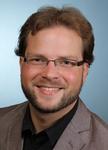Reliably determining data leakage in the presence of strong attackers
Abstract
References
Recommendations
Data exfiltration
ContextOne of the main targets of cyber-attacks is data exfiltration, which is the leakage of sensitive or private data to an unauthorized entity. Data exfiltration can be perpetrated by an outsider or an insider of an organization. Given the increasing ...
BAF and FI-BAF: Efficient and Publicly Verifiable Cryptographic Schemes for Secure Logging in Resource-Constrained Systems
Audit logs are an integral part of modern computer systems due to their forensic value. Protecting audit logs on a physically unprotected machine in hostile environments is a challenging task, especially in the presence of active adversaries. It is ...
A novel approach for privacy homomorphism using attribute-based encryption
In CRYPTO'13, Gentry et al. proposed the first homomorphic encryption HE scheme for the attribute-based encryption ABE. However, Gentry's scheme requires the same index for encryption of each ciphertext and supports only the key-policy ABE. Indeed, in ...
Comments
Information & Contributors
Information
Published In

- Conference Chair:
- Stephen Schwab,
- Program Chairs:
- Wil Robertson,
- Davide Balzarotti
Sponsors
- ACSA: Applied Computing Security Assoc
Publisher
Association for Computing Machinery
New York, NY, United States
Publication History
Check for updates
Author Tags
Qualifiers
- Research-article
Conference
- ACSA
Acceptance Rates
Contributors
Other Metrics
Bibliometrics & Citations
Bibliometrics
Article Metrics
- 0Total Citations
- 532Total Downloads
- Downloads (Last 12 months)36
- Downloads (Last 6 weeks)5
Other Metrics
Citations
View Options
Get Access
Login options
Check if you have access through your login credentials or your institution to get full access on this article.
Sign in
